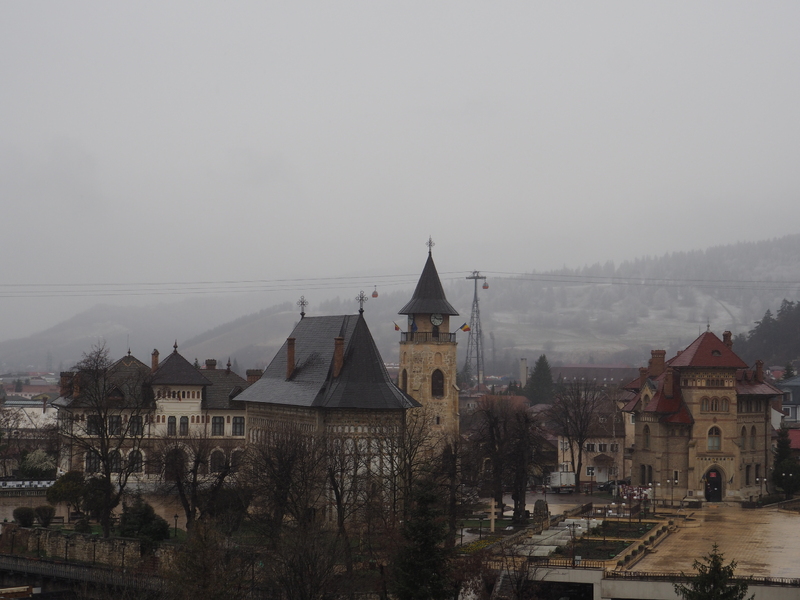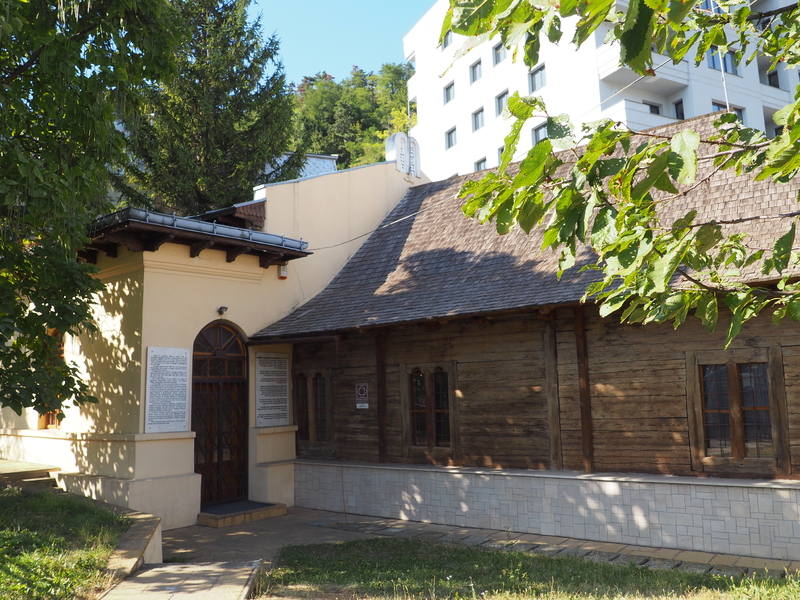Emmanuel Nicolae Nadler
Peatra Neamt and meeting Emil
After packing the two duffle bags full of medical supplies into Angelina and Olga’s car, I left the border, driving through the Bukovina region to Piatra Neamt. The countryside is picturesque, with rolling hills and the Carpathian mountains in the distance. I think someday in the future I will return to go walking around old castles and hiking in the mountains. I was still on the search for my grandmother’s birth certificate, however, and for more information and connections with my ancestors.
Emil is the president of the Piatra Neamt Jewish community, he takes care of the Baal Shem Tov Synagogue, originally built of stone, it was rebuilt in 1766.
Emil is also a distantly related cousin. A nationally known published poet and journalist, Emil says that in addition to his work with the Jewish community he is “a writer, art critic, and museographer”.
Emil is also a gentleman in the old fashioned European sense. When I arrived in Piatra Neamt, tired from the drive and visit to the border, Emil welcomed me by reserving a hotel room for me and taking me out to dinner. The next day, we met up in Emil’s office which is situated next to the Baal Shem Tov Synagogue in a separate building. Returning to meet Emil, I had to call him to find my way, as I didn’t remember the entrance which is slightly hidden on the side of an old building. It was rainy and cold and I was happy to be ushered by Emil in at the doorway, and then met Emil’s staff who greeted me in Hebrew, “Brachim Habaaim”, welcome, and then was brought by Emil into his office, who offered me a steaming cup of strong coffee. Emil works at a large desk with evidence of his busy schedule illustrated by the impressive pile of papers in front of him. Emil’s office is filled with original art, gifts from his artist friends/colleagues, and some Jewish community art rescued from the many destroyed synagogues of Bucovina, the story of each which would likely fill its own volume.
We had some difficulty communicating, half in French, half in English, as we did not have a language in common in which either of us had real fluency. Yet I understood from Emil that his grandparents moved to Israel, after the war, but not Emil’s parents. Emil’s father was a doctor and they lived in the outskirts of town, which also reflected their position in the Jewish community. They were closely identified as Jews but remained distant, explained Emil as most of the Jewish population (like my family) were storekeepers, middle class, or else rather poor. Emil said his family were intellectuals and thus outsiders.
Emil explained that since his grandparents moved to Israel, the family became cut off from each other. The communist regime and the difficulties with communications created an almost complete separation until the December 1989 revolution, the execution of Romania’s then dictator Nicolae Ceausescu and the fall of 42 years of communist rule. Emil showed me a photo of his elderly mother meeting cousins (including Danny Zohar) who finally visited Romania from Israel. This would have been long after his grandmother had died.


